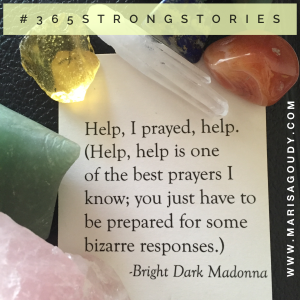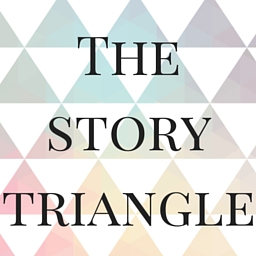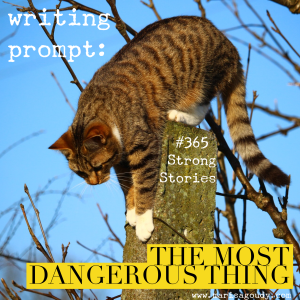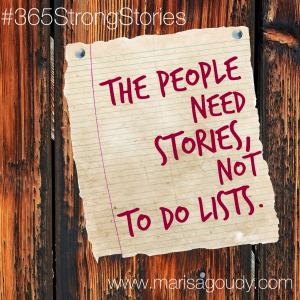
BLOG
This is when you ask for help
 I just made a cup of coffee without the cup. A great brown countertop and a smug looking Keurig machine didn’t photograph well so you’ll have to take my word for it.
There’s no use weeping over spilled caffeine - I tossed some towels over it, firmly placed a cup beneath the spout, and asked the coffee gods to give me one more hit. Instead of collapsing into exhausted tears, I’m resorting to prayer.
I just made a cup of coffee without the cup. A great brown countertop and a smug looking Keurig machine didn’t photograph well so you’ll have to take my word for it.
There’s no use weeping over spilled caffeine - I tossed some towels over it, firmly placed a cup beneath the spout, and asked the coffee gods to give me one more hit. Instead of collapsing into exhausted tears, I’m resorting to prayer.
Note that this coffee incident happened at noon during my first of two solid work days this week. There is no time to get on my knees or pull out a meditation cushion. All I can do is sit at the keyboard and say the prayer that a red-haired Celtic Mary Magdalen named Maeve has given us:
Help, I prayed, help.
(Help, help is one of the best prayers I know; you just have to be prepared for some bizarre responses.)
Another line from this fabulous Maeve creature: “A story is true if it’s well told.” That means that this character in Elizabeth’s Cunningham’s brilliantly told novels are a kind of truth we can tuck into our hearts and swirl into our coffee to get us through.
Ask for help and, somehow, the universe will send you what you need.
When I prayed and typed and clicked and sipped, I wasn’t exactly sure what sort of help I was asking for.
House cleaning. Toddler sleep training. Webinar advertising.
 I’m willing to take help in any form it comes, really. Since you probably can’t come over to clean under the coffee pot and my kid won’t let anyone near her but me at 4 AM, I’ll ask you for help with the last one.
I’m willing to take help in any form it comes, really. Since you probably can’t come over to clean under the coffee pot and my kid won’t let anyone near her but me at 4 AM, I’ll ask you for help with the last one.
I’d be honored if you would share the news about Connect with Readers & Clients: Discover the Story Triangle webinar I am teaching on Tuesday, April 5 at 1 PM ET.
Will you please come too?
Shared Passions and Outlandish Secrets
 It’s rainy, cold, and Celtic as hell out there on this March afternoon in New York. If I ever mention the weather in my writing, you know it is exactly this kind of day. The heavy fog is the perfect screen for my imagination to play out its most fabulous, fantastical visions. This almost makes up for the loneliness, nostalgia, and “what would life be life if only I had…” thinking that soaks through me.
I have a great library of memories and stories to wander through as I stare into the mist, tea cup clutched to my heart. But Outlander has been romancing the collective imagination lately, so it’s easiest for my daydreams to gallop off to join Claire and Jamie in the Highlands.
It’s rainy, cold, and Celtic as hell out there on this March afternoon in New York. If I ever mention the weather in my writing, you know it is exactly this kind of day. The heavy fog is the perfect screen for my imagination to play out its most fabulous, fantastical visions. This almost makes up for the loneliness, nostalgia, and “what would life be life if only I had…” thinking that soaks through me.
I have a great library of memories and stories to wander through as I stare into the mist, tea cup clutched to my heart. But Outlander has been romancing the collective imagination lately, so it’s easiest for my daydreams to gallop off to join Claire and Jamie in the Highlands.
The Frasers belong to anyone willing to pay for premium cable now, so it’s no longer a private reverie. Back when I first discovered Diana Gabaldon’s first novel at 15, it felt like an unknown otherworld. Occasionally the books would find their way into conversation and it would be like finding a member of the underground “Je suis prest” sorority, but generally the series felt like a guilty pleasure you couldn’t really discuss in mixed company.
Now, I’ve gone and given copies to my mother-in-law and my stepmom. My husband is working his way through book 2 and I fully expect my dad to give it a try soon. The television gods have ushered these stories off the pages where we could only imagine the look in Jamie Fraser’s slanted green eyes. Outlander makes the cover of Entertainment Weekly and their whole world has emerged into the culture with such confidence and acclaim that I almost forget it contains a dozen scenes I’d rather die than discuss at a holiday dinner.
And yet, I find these are still secret stories. I can only write about the external phenomenon of sharing the books and watching the show, not the thoughts that swirl around me on a quiet gray day halfway around the world from Craigh na Dun. These visions are still mine, intimate as a reader alone with a book or a couple whispering together in the night.
Claire and Jamie belong to everyone now, but in the most important ways, they will always belong to me alone. If you knew and loved them once upon a time, they’ll always belong to you too.
Writing Prompt: The Most Dangerous Thing
 As we prepared for the Easter bunny yesterday, I decided to try blowing the good stuff out of a few eggs (mostly because I cracked half of the hard boiled batch). My daughter looked at me with a mix of horror and hilarity. She declared that what I was doing was "the most dangerous thing I have ever seen!"
Clearly, she lives a sheltered life (and I feel pretty proud of that fact), but what about you? What is the most dangerous thing you have ever seen or tried?
As we prepared for the Easter bunny yesterday, I decided to try blowing the good stuff out of a few eggs (mostly because I cracked half of the hard boiled batch). My daughter looked at me with a mix of horror and hilarity. She declared that what I was doing was "the most dangerous thing I have ever seen!"
Clearly, she lives a sheltered life (and I feel pretty proud of that fact), but what about you? What is the most dangerous thing you have ever seen or tried?
Based on this video, I hope you'll see that tongue in cheek answers are encouraged and perhaps even preferred. After all, Easter is a day that can use as much laughter and joy as possible.
Share your own "danger mom" or even "danger bunny" stories on the comments or tag me when you share them on social media.
The Shame of Shushed Story
“Oh honey, let’s not tell that story.” The words flowed easily from my lips but they were terribly hard to hear, hanging there in the air. I’d delivered them as kindly as I could in the voice of a woman with too many worries and too little sleep. All I wanted was the oasis of a quiet shower and to make it to my first cup of coffee before anyone pulled hair or screeched or required a bandaid.
But I know that silence and distrust and disconnection are born of distracted admonishments. This was a tiny sin that hinted at a deeper darkness.
My six year-old was remembering the beach house that the family rented for several summers. Her memories of eating a dozen clementines gave way to remembering when one older family member had fallen and knocked out a tooth.
I don’t like that memory. It was upsetting and it wasn’t pretty. I felt the pain and the worry of that Cape Cod morning. The guilt that I hadn't been very helpful at the time was (my excuse was morning sickness, but that seems paltry now). None of these thoughts were going to ease me into what was going to be another challenging day, so I shushed her and kept moving.
As I dive deep into what it means to tell stories, I'm learning just as much about how to receive and keep stories. Stories need to be held and reviewed when they bubble up. When they are stifled they become the monsters of shame and doubt and fear.
In trying to protect myself from unresolved hurts, I create new ones for my daughter. In trying to stifle the pure, spontaneous sharing of memories, I am creating new ghosts that are bound to be much more ghoulish the next time they come around.
I am a storyteller. I ask people to walk into the shadows with me so that we can appreciate the light. That means I also need to allow others to tell me their stories - even when I find them unsettling or inconvenient, even when I want to wish the memories away.
Learn how to tell your own stories with greater sensitivity and awareness. Join the free online class, The Story Triangle, on April 5.
The People Need Stories, Not To Do Lists
 The difference between telling a strong story and writing “just another blog post”
The difference between telling a strong story and writing “just another blog post”
There are million different ways to approach a topic. Say you wanted to write about how to talk with your partner about a struggles a creative entrepreneur.
You could use the good old “people love list posts” approach:
Seven ways you “should” approach the situation including “make a spreadsheet that he can understand!” and “make sure everyone is well-rested and ready to fully engage in the conversation.”
If your readers are worrying about how to get their partner to be more supportive of a business venture, they just might come away with a tip that helps them along.
But then there’s the storytelling approach:
It’s one a.m. when she gets to bed. She’s chilled from sitting at the computer for so long and feels so grateful when he entangles his sleep warmed limbs with hers. Visions of Facebook ads and YouTube clips swim before her eyes as she tries desperately to sleep. The kids will be up soon and there’s so much more work to do to get this new course launched.
He knows the pattern of her breath. He knows it doesn’t mean anything good. “Did you get everything done?” he asks. When she snorts, he asks, “Did you get at least one thing done? Are you upset?
“Yes. And yes.” She starts to cry because finishing up a LeadPage doesn’t feel like much when the to do list stretches across so many notebook pages.
She is not ok. She is tired and she is scared and she is so desperate for all of her work to pay off.
It would have been easy to mumble “it’s all good” and roll over to feed her fears into the lonely darkness. Instead, she chose to be honest. She chose to speak her truth and ask her husband for the kind of help that only he can give - to listen to her in the darkness and make the world feel safe again.
Though they’ll both be exhausted in the morning, there’s one less brick in the wall between them. There’s space for sunshine and support and connection to flow in their marriage, in her business, and in their bank account.
This is why storytelling works
Because it’s a story, the reader connects with you in a real way that builds trust. They get drawn in by the emotion. Even if they’re not looking for “quick and easy tips for having tough conversations with your spouse about your business,” people who understand the challenges of entrepreneurship will be drawn in.
Stories are like giant magnets for the brain - people want to be invited into the room, into the conflict, and into the resolution. A story like this one shows them they’re not alone and exposes the other side of “grow your six figure online business” sales pitches.
How to make storytelling work for you, your audience, and your business
Is that my story above? Well, I can tell you that I am launching a new course and I’m pretty sleepy today…
That’s not the point of all this, though. My goal is to help you understand that stories are what connect you with your readers and with your potential clients.
We dive deep into why we need stories and list posts in the Connect With Your Readers & Clients: Discover the Story Triangle webinar. The recording will be available through Monday, April 11.

